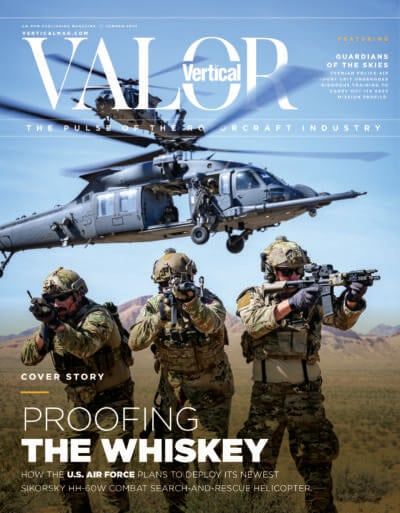On June 13, 2023, three separate fires ignited in Southeast Washington’s Benton County, prompting immediate calls for help. Designated the Benton Complex, the fires were pushed by high winds and quickly threatened homes, businesses, and the premiere Red Mountain American Viticultural Area. Washington State Department of Natural Resources (DNR), the state’s initial wildfire air attack force, jumped into action, launching helicopters and airplanes to the literal uphill fight.
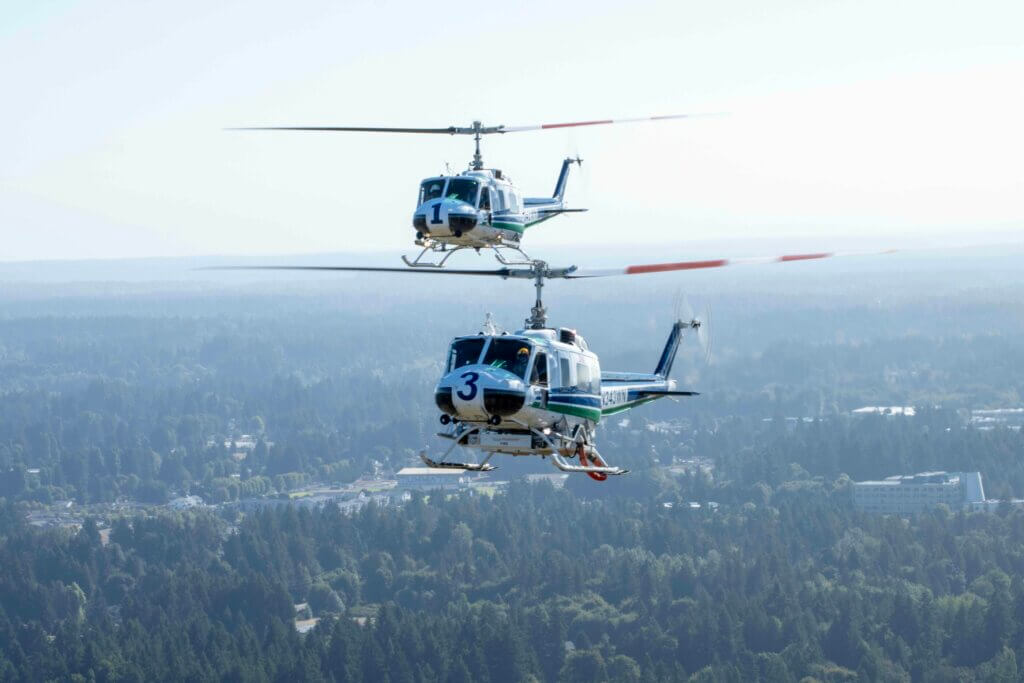
“The 30-plus knot winds were driving the fire uphill toward homes and structures,” explained Rich Knoth, Washington State DNR chief pilot. “To fight the blaze, we used airplane scoopers and tankers that can drop more water and retardant to try and stop the fire’s forward progression. Then the helicopters came in as a daisy chain to drop water on the head of the fire. But the winds were blowing so hard, even with four helicopters, we couldn’t turn fast enough to get ahead of it.”
The helicopters were soon redirected to structure protection, which itself brought a number of challenges. They flew over the head of the fire to load water, returning to protect houses with precision water drops as the winds swirled around them. It wasn’t long before the fire started moving between the structures as well, adding another layer of technical challenge on the ground and through the fire-fueled thermals.
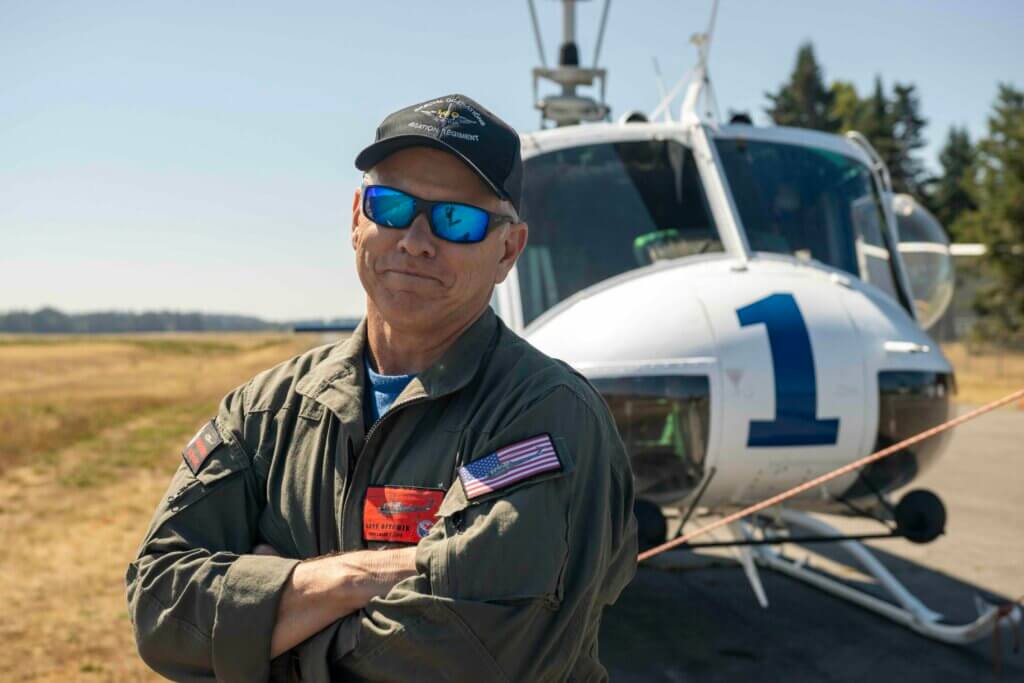
“Many of the pilots were dipping out of an irrigation viaduct, basically a cement lined channel no wider than 10 or 12 feet [three to 3.7 meters] that meandered around the buildings for irrigation to some of the fields that were now on fire,” Knoth said. “They had to drop their buckets into those small irrigation ditches, pull the water out, and fly sometimes only 100 ft. [30 m] to drop it around the structure. Fighting those winds while doing it and trying to get the bucket in that viaduct was pretty sporty for them.”
The state’s first line of defense
Washington State DNR’s Wildland Fire Management Division (WFMD) is the state’s initial air-ground attack force tasked with helping local, state, tribal, and federal agencies fight fire on public, tribal, and private land. Comprised of DNR’s aviation assets and helitack, the unit’s teams respond anywhere in the state, and can also be available to provide initial attack support to nearby states and Canada when not needed in Washington.
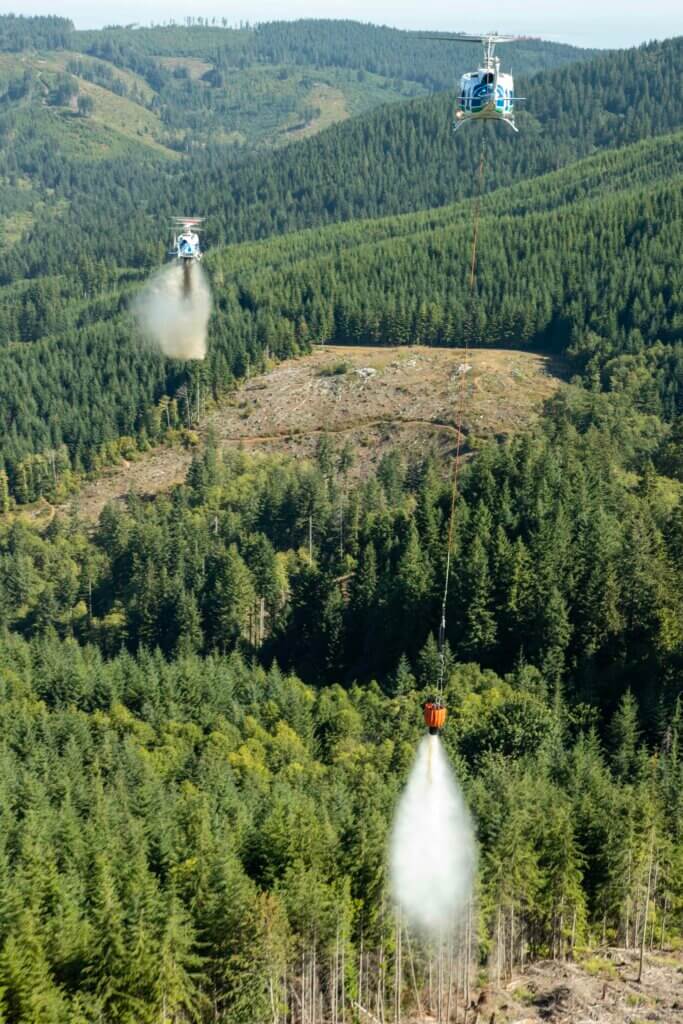
WFMD’s ultimate goal is to contain wildfires before they spread to 10 acres. To meet this objective, teams are strategically located across the state during fire season, on call from sunup to sundown, and prepared to launch in as little as 10 minutes from the time of a call for air support. This is no small feat and DNR is only able to achieve this level of response thanks to considerable air and ground support, funded through generous state and federal dollars.
WFMD operates 10 Bell UH-1H public use helicopters, a Bell 206L4 LongRanger, two Kodiak multi-mission 100 airplanes, and 14 unmanned aircraft systems (UAS). The aircraft are supported by U.S. Forest Service certified helicopter pilots, Federal Aviation Administration (FAA) certified aviation maintenance technicians/inspectors, and program supervisors and managers, while the helitack side of the house employs a professional team of aerial delivered firefighters, base managers, helicopter managers, squad bosses, and support drivers.
Supplementing the state’s assets are 14 exclusive use aircraft contracts and more than 60 aviation companies that are on call-when-needed contracts. The state’s exclusive use contracts include two Type II airtankers, two Super Scoopers, five SEAT Fire Bosses, and two tactical air attack planes. DNR also has three Type I exclusive use helicopter contracts, which this year are supported by Northwest Helicopters and HP Helicopters with Sikorsky UH-60s. The call-when-needed contracts span a variety of airplane, helicopter sizes and profiles, allowing the state to call on additional assets as needed.
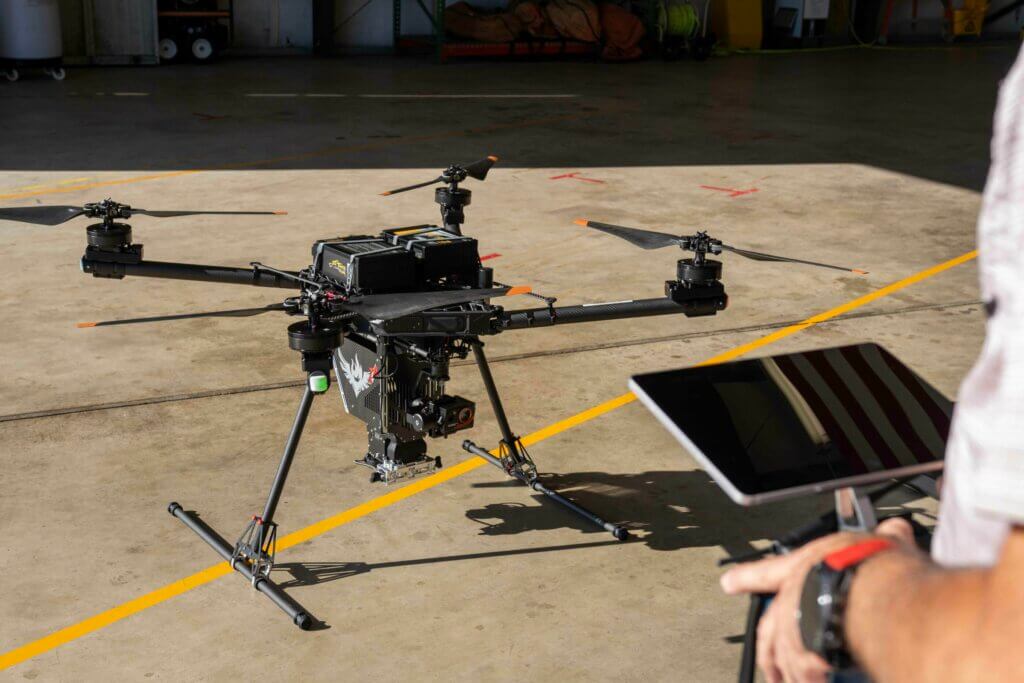
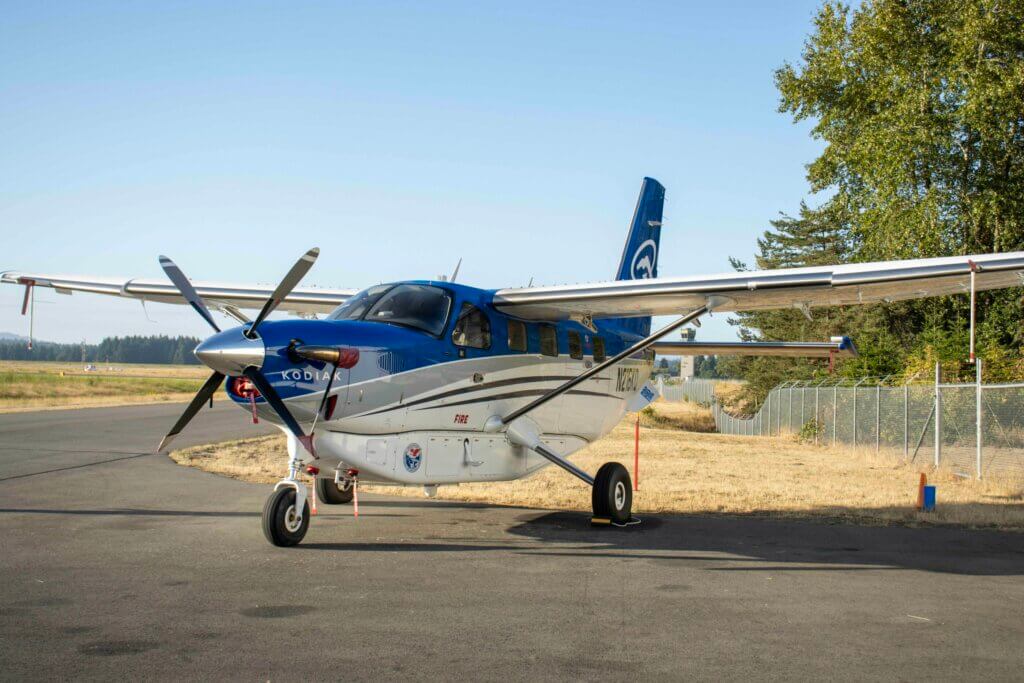
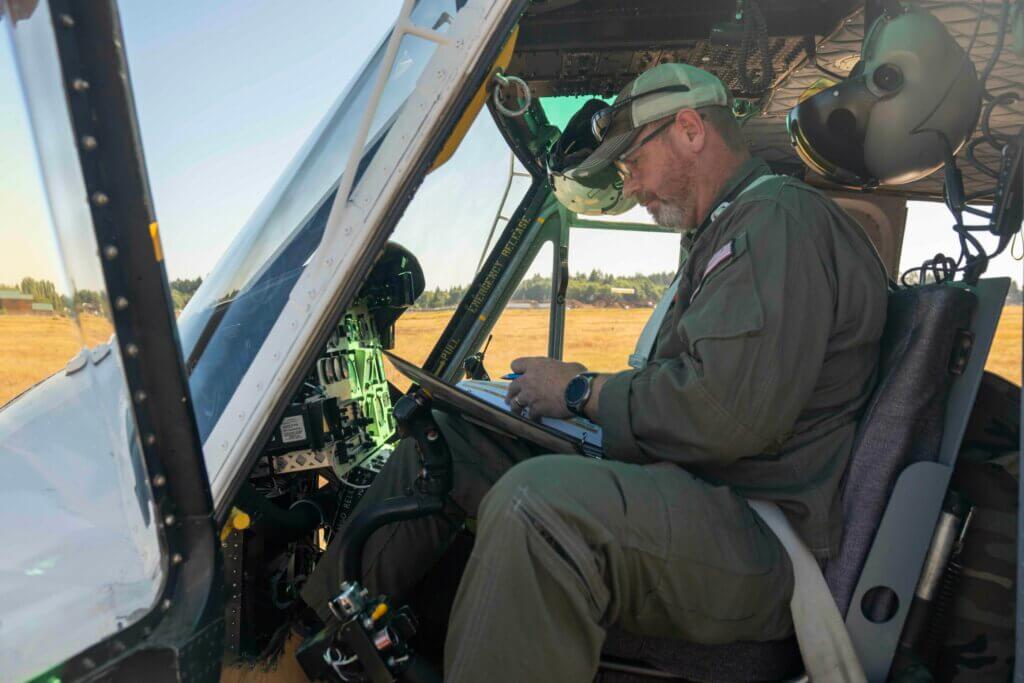
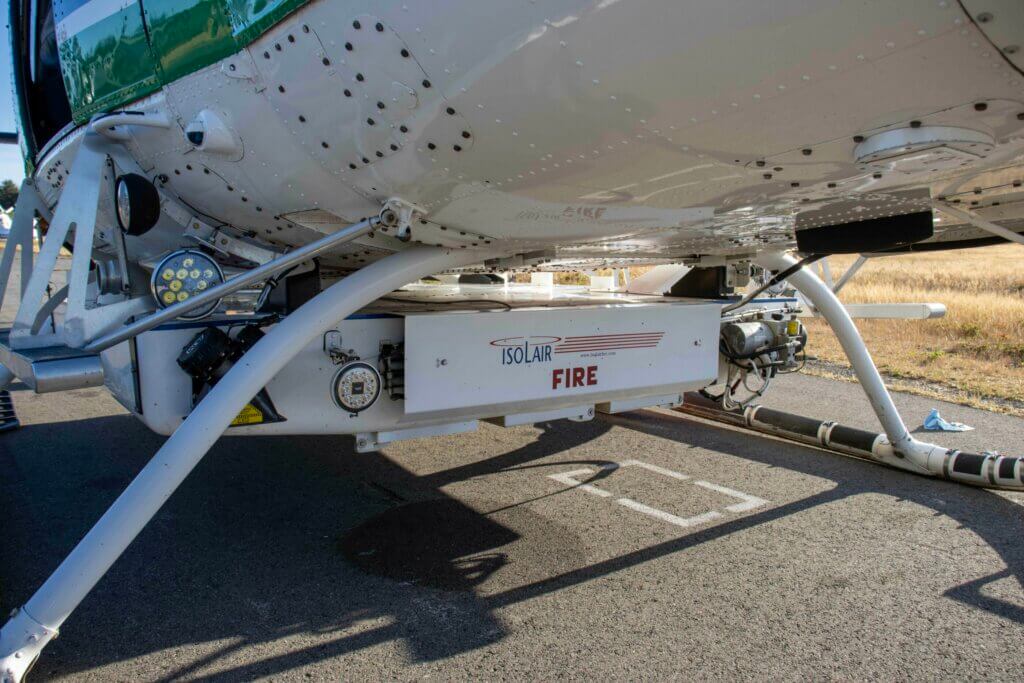
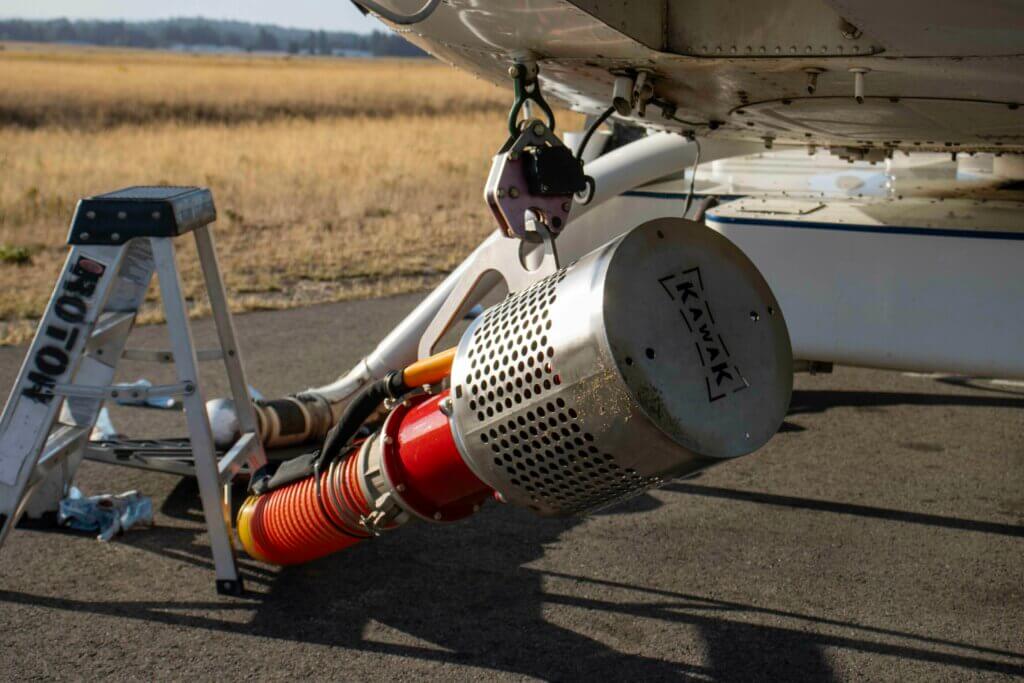
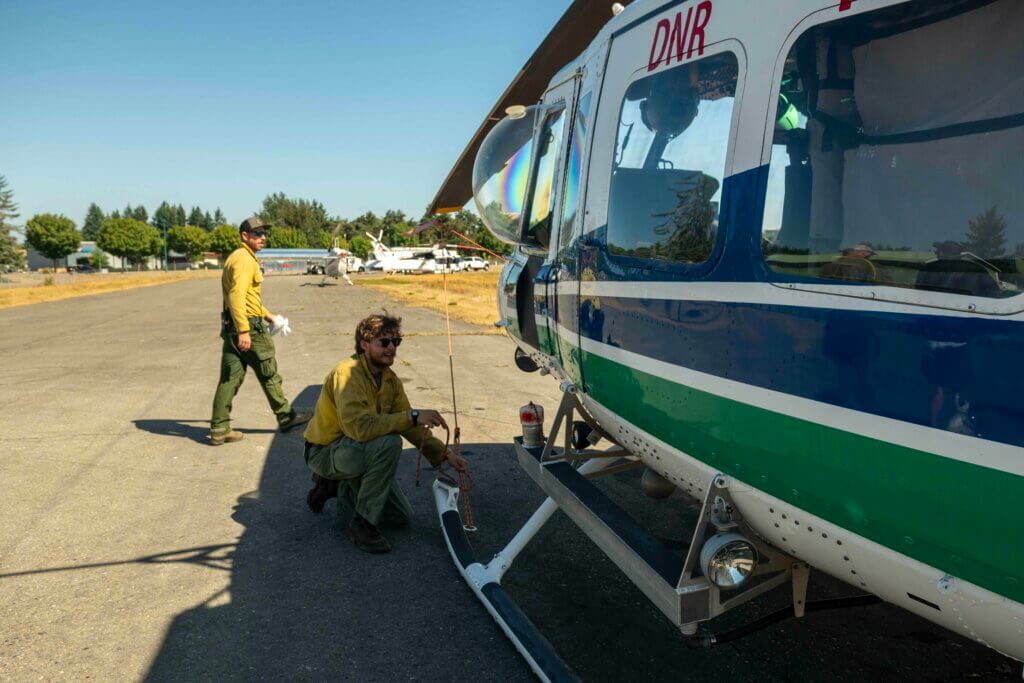


WFMD operates two permanent bases in Olympia in Western Washington and Yakima in Eastern Washington. During fire season, it adds six seasonal bases throughout the state, and operates 12 remote bases that include aircraft, fuel trucks, and support. With these assets, the agency has successfully contained an average of 94% of the state’s fires to 10 acres or less for the last few years.
The call to action
DNR’s wildfire response didn’t used to be this robust. When Washington State Commissioner of Public Lands Hilary Franz took office in 2017, the agency owned eight flightworthy Vietnam-era Hueys and close to a dozen used for parts. Each operating aircraft had been rebuilt to meet stringent state and federal firefighting requirements, operating in day visual flight rules (VFR) conditions. DNR also maintained contracts for seasonal air attack and SEAT Fire Boss airplanes.
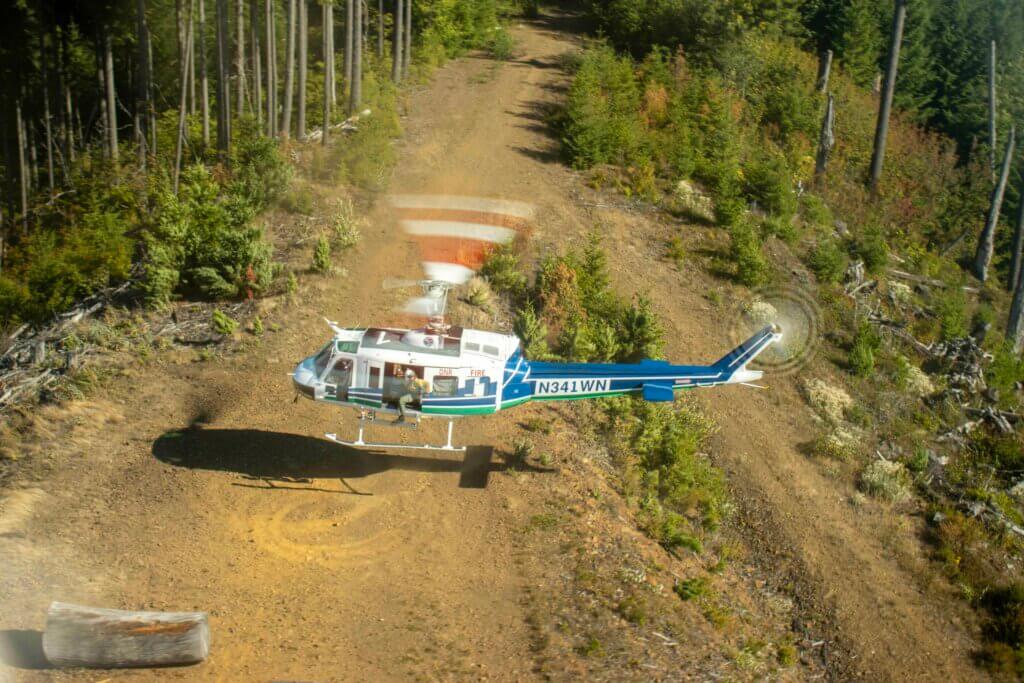
“When Commissioner Franz came onboard, I briefed her on our limitations and suggested we needed at least one more Huey and a certificated helicopter to support our work, as well as contracts for larger support aircraft,” said Dave Ritchie, aviation assistant division manager for Washington State DNR. “We got those pretty quick so were able to build another Huey and got the JetRanger for support and recon. As the fires really started to ramp up in the last few years, we were able to build on our program by contracting larger helicopters and airplanes, including contracts for CL-415 Super Scoopers and Q-400 tankers. We’ve used those airplanes almost every day.”
Washington State DNR’s competitive contracts are strict due to the multi-agency nature of support, Ritchie explained. Contractors need to be certified by the U.S. Forest Service and the Department of the Interior in addition to meeting Washington’s requirements just as DNR’s aircraft and teams do.
“We’re all hands, all lands,” Ritchie said. “Our number one notion is initial attack. If someone orders air support, whoever is closest gets there and starts fighting the fire until DNR aircraft can replace them, if we choose to replace them. Typically, we want to have our own teams respond because we have our own firefighters and incident commanders on the team. We can get boots on the ground quickly, and it’s those firefighters that put it out. [Aircraft] only slow the fire down so ground firefighters can do their job. Once we get a fire slowed down, or if it gets beyond our ability or we need more support, we bring in the contract force that we control with our managers. This can also let us go back to initial attack because we don’t want the next fire to get beyond 10 acres.”
While federal wildfire contracts are responsible for federal lands, that doesn’t always mean a federal asset is immediately available. Those aircraft are dispatched based on the amount of life and property at risk around the nation from all fires on federal lands. As a result, Washington State DNR provides about 85% of the aircraft responding to fires throughout the state in the initial part of the season until conditions warrant additional aircraft from the federal government, but sometimes that isn’t even enough.
A good example was Labor Day weekend 2020 when the perfect storm of high winds, record breaking temperatures, and exceptionally low humidity led to an astounding number of forest fires across Washington, Oregon, and California.
In Washington, 80 fires started in a single day. The high winds launched burning debris that ignited fires further downwind. More than 300,000 acres burned in a single day, including an entire town, and more than 600,000 acres burned before all the fires started that day were extinguished.
Due to the astounding number of fires across the western states, Washington State DNR’s repeated calls for help from other states and the federal government couldn’t be fulfilled as its owned and contracted aircraft quickly became overwhelmed.

“After that we knew we had to have larger aircraft and more equipment available because we physically couldn’t keep up,” Ritchie recalled. “I don’t have enough aircraft to respond to the entire state within 15 to 20 minutes or protect the whole state when such a large event takes place.”
Commissioner Franz began lobbying the Washington State Legislature for increased funds to tip the scale in the state’s favor when it came to immediate fire response. It was this bipartisan effort that delivered much needed funds for DNR to boost exclusive use contracts to today’s level, as well as purchase the EO/IR sensor-equipped Kodiak multi-mission airplanes and new equipment, including technology to modernize DNR’s helicopters.
“We were able to provide a fuel trailer or truck for every aircraft for remote and portable bases,” Ritchie said of the increased funding. “There is no jet fuel in Forks in the northwest corner of the Olympic Peninsula, for example, which requires us to make agreements with the U.S. Coast Guard for fuel, but that is still a distance. For fires around Forks, we can only be on station 15 minutes before we have to fly back for fuel. Having fuel available where the aircraft is fighting fire helps us better respond quickly.”
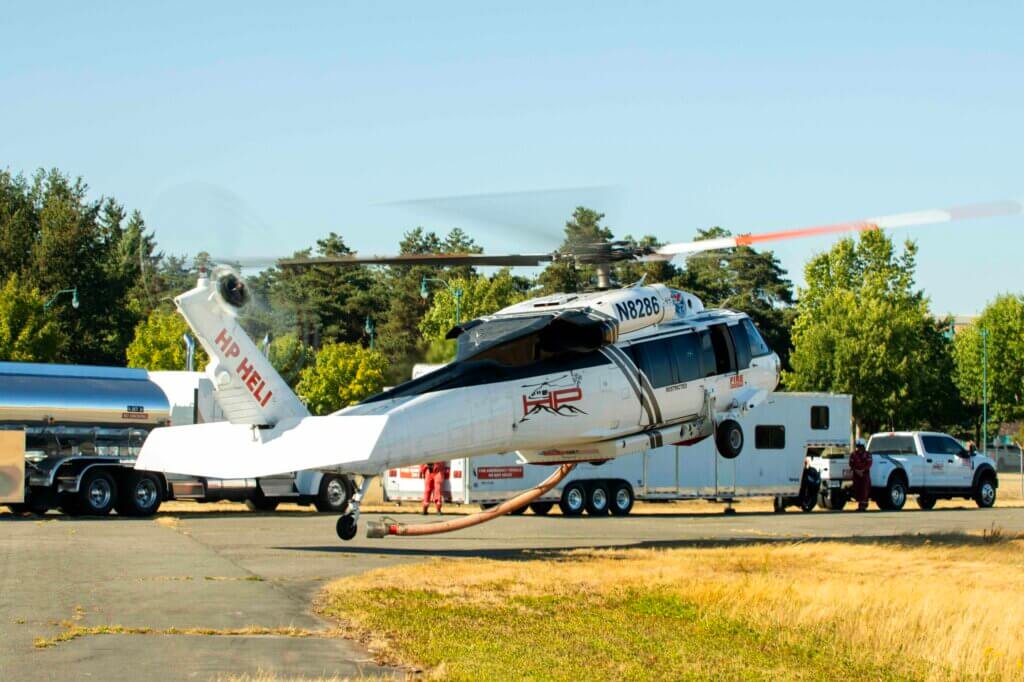
The funding also provided a portable air tanker base that can be set up in four hours and provides retardant anywhere needed for response. Prior to this purchase, DNR relied on the federal government’s base, which required aircraft to fly to it to refill. The new base further reduces turn times.
Better than new
Firefighting agencies are no stranger to exceptional resourcefulness in the face of tight budgets. While Washington State DNR’s WFMD would ideally like to upgrade its fleet to certificated, modern aircraft, funds are more desperately needed to put as many assets on fires as possible.
Not unlike the scrappy mechanic Maru in Disney Pixar’s Planes: Fire and Rescue who built and rebuilt parts as needed and deemed them “better than new,” WFMD has maintained a strong fleet of UH-1H Hueys using parts from spares and new equipment.
“They may be Vietnam-era, but they have been completely rebuilt and I’d even say they’re better than they were when they were in the war,” Ritchie said. “We have put a lot of work into ensuring they meet rigid state and federal requirements, and they are immaculately maintained by a group of stellar DNR mechanics. There is really no better aircraft for this work.”
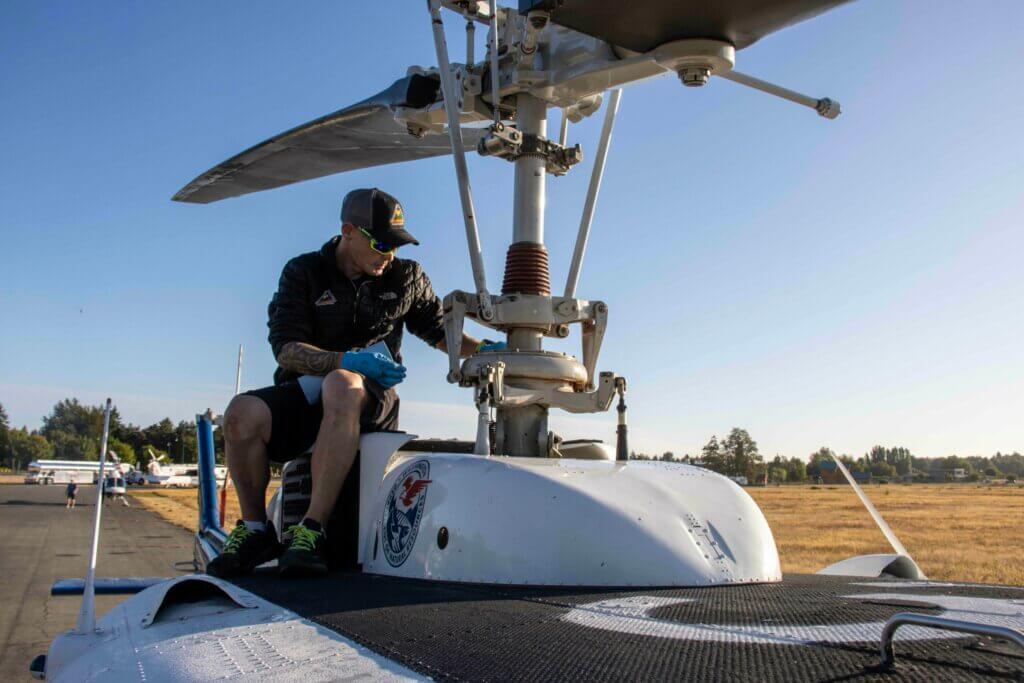
The next round of modifications for these aircraft is already underway. Three UH-1H helicopters have received full night vision goggle (NVG) glass cockpit packages. The rest will receive the glass cockpit packages without NVG capability.
“We are currently modifying three aircraft per season,” Knoth said “We modified three for NVG operations last winter. We plan to upgrade three more with glass cockpits this winter and have them all outfitted with glass cockpits within the next two years or so.”
DNR has not yet operated with NVGs on fires due to staffing and training. The agency has two fully trained NVG crews and will send its line pilots to Aviation Specialties Unlimited in Boise, Idaho, for initial qualifications later this year, Ritchie said.
“We had massive winds last November that pushed fire from slash burns and caused a record number of fires,” Knoth said. “Winds were so high there were times we couldn’t fly. As it cools down at night the winds die down. If we’d had the NVG program running last year, we’d have been able to keep those fires at bay. That’s how we plan to use the aircraft when everyone is trained and signed off.”
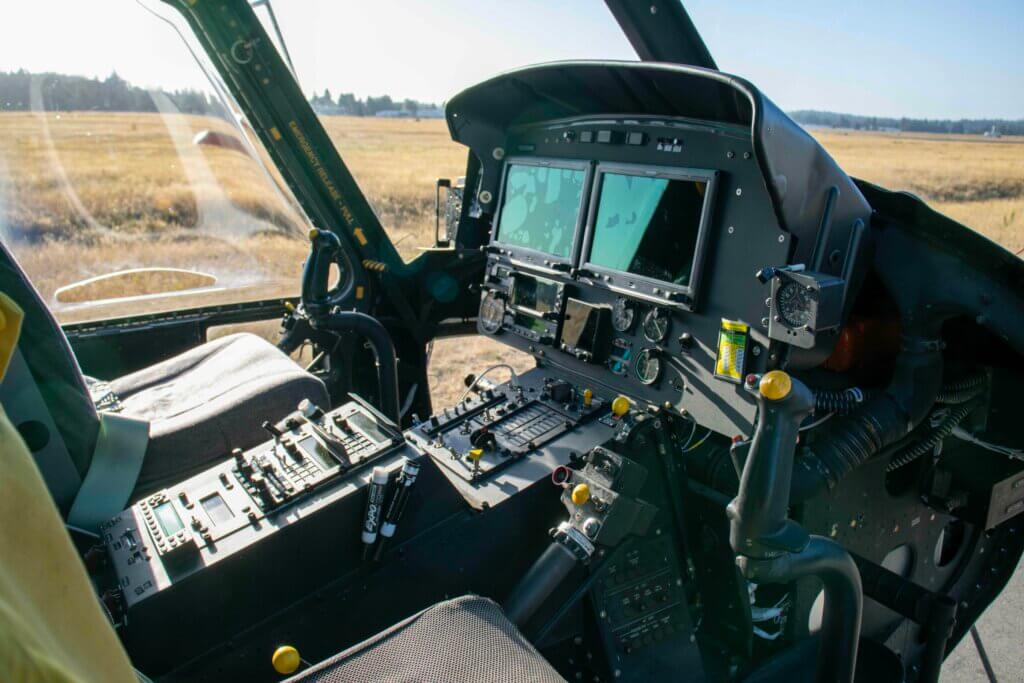
The updated avionics package includes two 10.6-inch Garmin G3X Touch flight displays, a Garmin 650, GNC 255 as a second radio, two programmable TDFM-136B for VHF/FM communications, and Garmin G5s for backup displays. The three NVG aircraft also have internal and external NVG lighting.
All aircraft already have and will maintain radar altimeters with multiple displays and Wi-Fi hubs that connect to cell phone towers. Pilots can receive images of the fire from incident command on their phones or tablets through the Wi-Fi hub while in flight.
Four of DNR’s helicopters are outfitted with Isolair 323-US gallon (1,222-liter) belly tanks with 27 US gal (102 L) of fire suppression chemical capability. These tanks were chosen for their ability to remain on the aircraft if operators needed to switch to longline. These four aircraft are primarily assigned to the west side of the state to reduce longline operations in the more populated areas, Ritchie said. The additional six aircraft are longline only and operate in the mountains and on the east side of the state.
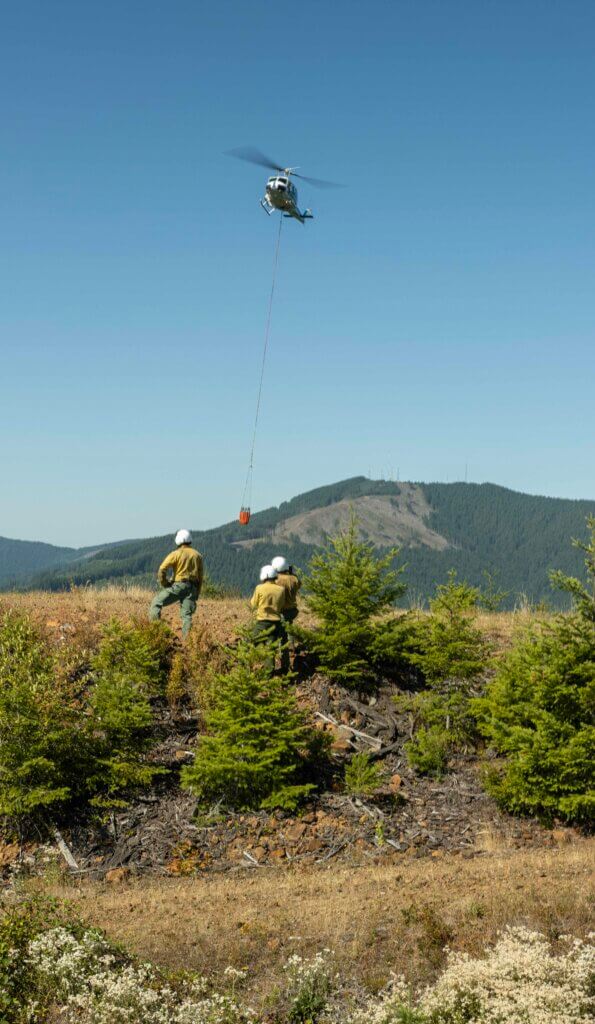
The Kodiaks, which are equipped with multiple EO/IR sensors to scan the fire, perform aerial recon and send live photos and video to ground units and stations.
The state funding bill in 2021 also supported DNR’s purchase of 14 UAS. A mixture of recon UAS with LiDAR and thermal sensors and UAS that carry plastic sphere dispensers to ignite prescribed burns allow the agency to immediately get information on a fire and take proactive steps with controlled burns.
“The UAS, when ordered, conduct recons, surveillance, and mapping,” Ritchie said. “They can do LiDAR, thermal color, and other common-sense mapping that give us an idea of what is happening with the fire when staffed aircraft are not needed, which reduces exposure to DNR crews.”
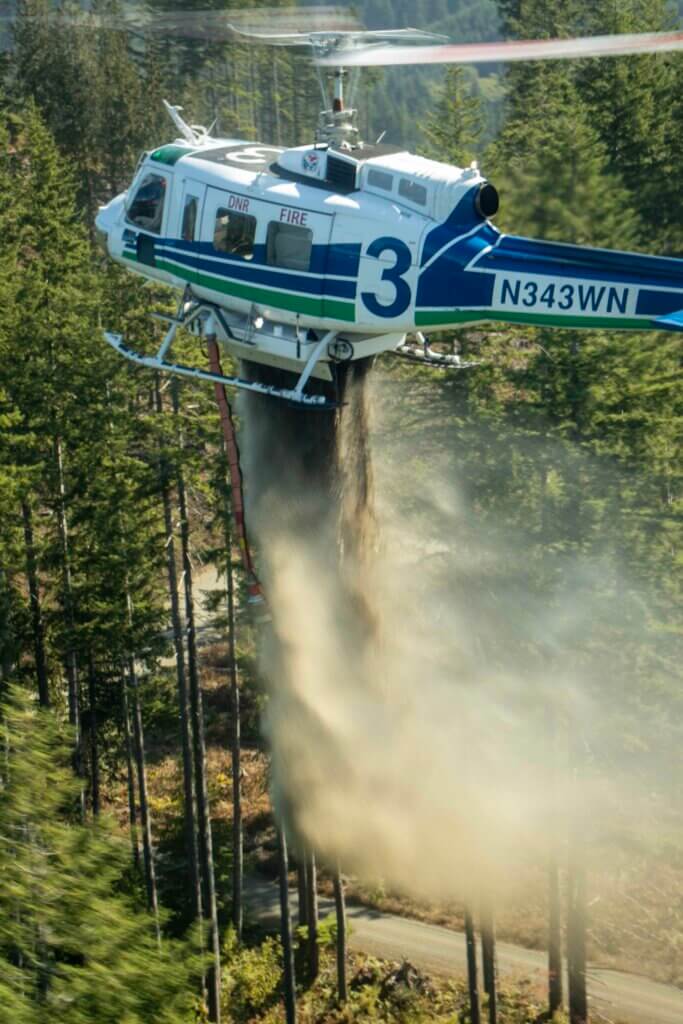
So far, the 2023 fire season in Washington has been fairly calm, but everyone remains prepared, knowing from experience how everything can change with the wind. In the meantime, DNR has been working with both the Washington Army National Guard and local municipalities and tribes across the state to provide aerial firefighting training for air and ground teams. Funding for more in-depth training alongside municipality and tribal fire departments was also earmarked in Commissioner Franz’s 2021 bill.
DNR is also supporting other states so assets aren’t sitting idle.
“We assure every aircraft we have and contract with are approved by the federal government and by Canada so we can push them wherever they need to go,” Ritchie said. “If we can get them assigned to another state or Canada, we do to be a good partner and help pay the bills. Typically, we try to keep them close, within a couple of hours of flight time, but if it suddenly started pouring rain here, I’d send them to Florida if they needed them.”




